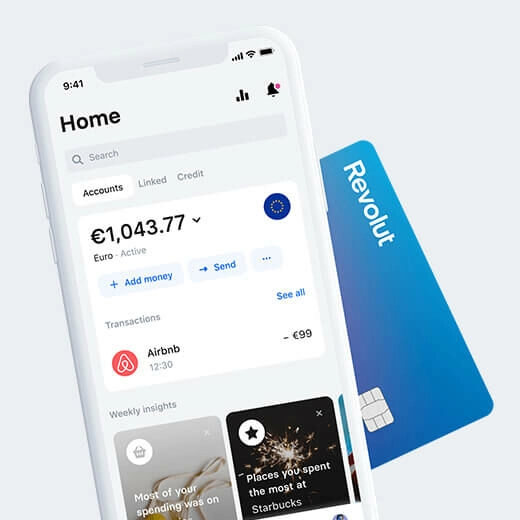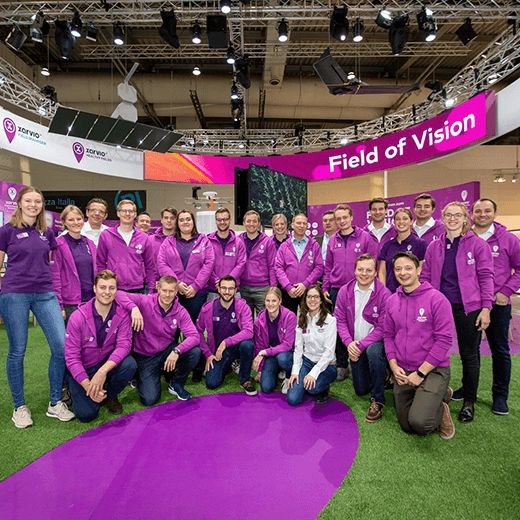With Lokalise, there is one less thing to worry about for global solutions roll-out, says the Digital Farming team of BASF
“We found Lokalise, validated the functionality it provides, ran a PoC and immediately switched to it.”
Denis Khomich
Engineering Manager at BASF
When agriculture meets the need for localization
xarvio™ Digital Farming Solutions, powered by BASF, is developing ground-breaking, paradigm-changing digital farming applications to optimize crop production, thus to make agriculture worldwide more efficient and sustainable. These solutions offer a comprehensive range of features that consume hundreds of varied data points across crop, field, climate, imagery, biotic and abiotic stress and simplify the decision making for farmers by offering easy to implement, actionable recommendations and even taking it one step further by guaranteeing weed-free fields to increase farmers’ convenience and success. The impetus behind xarvio’s three core solutions SCOUTING, FIELD MANAGER and HEALTHY FIELDS is to help farmers improve their yields, optimize inputs, mitigate risk and minimize environmental impacts.
xarvio solutions are available across all channels: web, tablets, smartphones and are free to download from iOS and Android app stores. The users can access the apps through self-signup in more than 100 countries and 30 languages.
With this large global presence, it is vital for xarvio to be able to scale up with ease and communicate their brand and product value consistently and effectively. To be able to support the global product offerings, the need for a smart solution for localization was realized.
The integration that mattered the most
xarvio being a globally available product, localization was a need from the beginning and the team developed a localization solution internally, which contained mostly static .json files. This was a working solution but was cumbersome to maintain with modifications for each language and scalability was becoming increasingly difficult to achieve. This is when the team started to look for specialized packaged solutions for localization.
While exploring COTS solutions one of the main drawbacks was lack of availability of API integration. xarvio team needed the capability to be able to integrate translations into products and hence API based interface was a key requirement to off-the-shelf localization solutions.
Lokalise was the only solution in the market that offered what we needed – the API that made it possible for an integration into our CI pipeline. So, we went for it.
The xarvio team conducted a short evaluation phase of Lokalise product offerings and appreciated the functions that Lokalise had to offer, including API interface and then moved swiftly to adopting Lokalise.
BASF's workflow with Lokalise
Today, the xarvio localization team includes close to 70 people who are located all over the globe and are responsible for various projects. Lokalise is used by the team to translate web and mobile applications, marketing emails and even print materials.
What is the usual process that the team goes through when using Lokalise?
The process begins when the development team starts planning out a product backlog and creating mockups, wireframes with the specialized design team. During this stage, subject matter experts – industry experts working within the agriculture and chemistry field – are also involved in the project to make sure that the new feature elements and their nomenclature is correct and relevant.
Once the product backlog gets translated to user stories, the new feature goes for back-end and front-end development during which the front-end developers create the keys that need to be translated and add them to Lokalise. Keys are getting aggregated into translation tasks in Lokalise. Then, the globally spread translators are notified about the subset of keys that need to be translated who proceed with using Lokalise to add the translations.
Finally, after everything is translated, a live demo system is launched. It allows the team to visualize the new feature, validate the translations and fix any issues.
Key features used
- QA
- Comments
- Screenshots
- LiveJS — web in-context editor

What makes xarvio's localization process more seamless is also that it is integrated directly with the QA environment. Lokalise makes collaboration amongst the involved stakeholders – developers, translators, reviewers, subject experts – significantly easier. Denis adds that:
All the people who are involved in the project can modify translations in the test version of the application. And if something is broken or incorrect, it can be fixed directly there.
The team also uses LiveJS, a web in-context editor that is integrated into their preview system, as well as the Comments feature, which allows anyone to make notes in the system and other team members to read through the feedback and comments regarding the project thus escape being drowned in a sea of emails of what content needs changing.
Lokalise is instrumental in reducing the number of round trips between developers and translators significantly. This is a huge advantage and essential for reducing the time to market.
The results achieved with Lokalise
When asked what xarvio would do if they didn’t have a tool like Lokalise, the team’s response is that they would have invested in developing a smart localization solution which would have required significant effort and money and thus affecting the development of additional features.
Denis concludes: “If localization is important for a product then seeking out a COTS solution that meets the needs is a smarter way to approach it.”
xarvio has been using Lokalise for about 3 years already. The result? Significantly shorter time to market for global product offerings. The journey began in 2016 with using Lokalise for 2 countries. In the first half of 2017, the team managed to add 16 more countries to their list. Within some of the countries, xarvio services are offered in multiple local languages. For example, in Belgium xarvio supports 2 languages and in India currently 3 different local languages are supported.
The most amazing thing is that we can scale one market per month.
Why? Simply put, the problems with the translation process have vanished since Lokalise was adopted. The process is straightforward and with the need for localization addressed, there is one less thing to worry about when targeting the launch of a global solution.
A tool that you can benefit from
Denis recommends Lokalise to any business out there that needs to offer products and services in multiple languages.
Here are some of the Lokalise benefits that he lists:
- Easy to use for both translators and developers
- Reduced stress and effort for developers with support of continuous delivery pipeline
- Time and effort saved by having a simplified, easy-to-use process that eliminates any unnecessary steps in the localization process, for example, the ability to translate the text directly in code instead of a plethora of offline excel sheets.
Read more case studies

How Lokalise contributed to Revolut's massive growth

How Lokalise helps Rydoo ensure translation consistency and accuracy
Case studies

Behind the scenes of localization with one of Europe’s leading digital health providers
Read more Case studies
Support
Company
Localization workflow for your web and mobile apps, games and digital content.
©2017-2026
All Rights Reserved.

